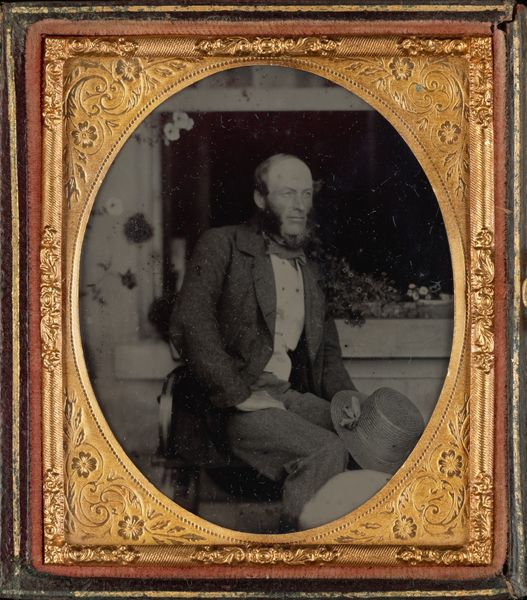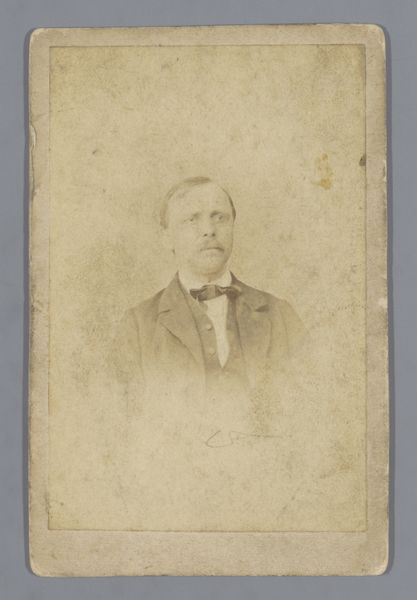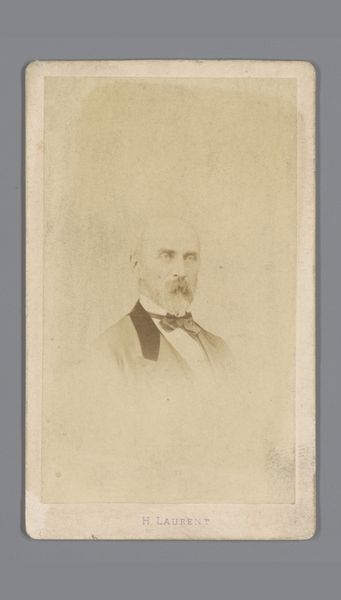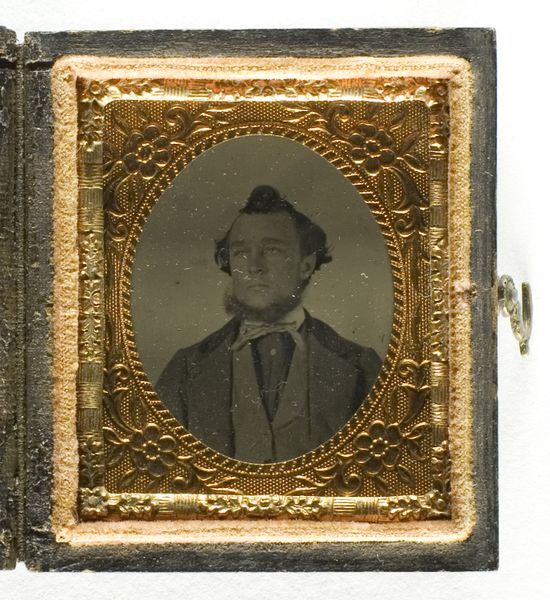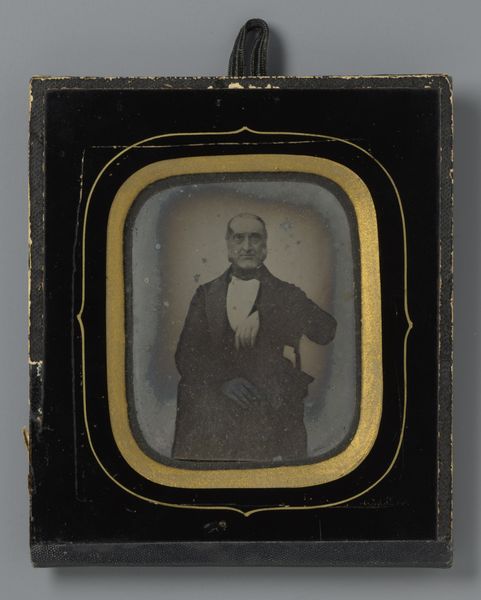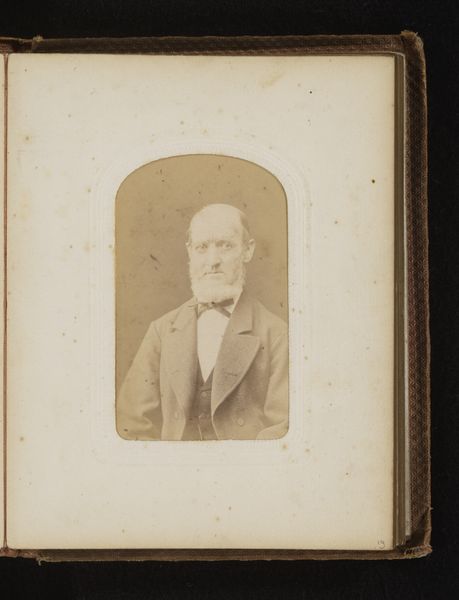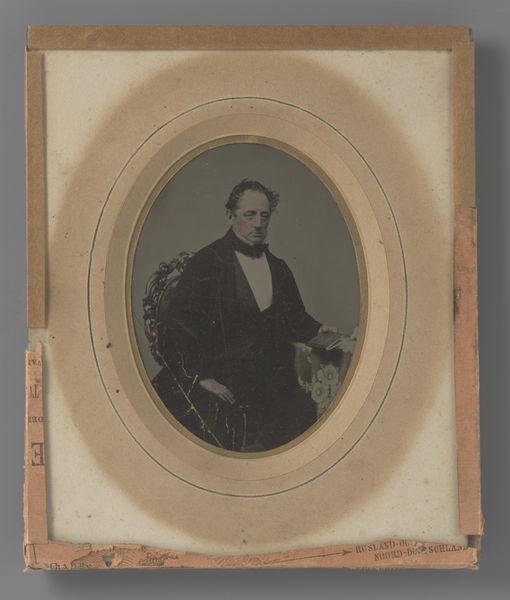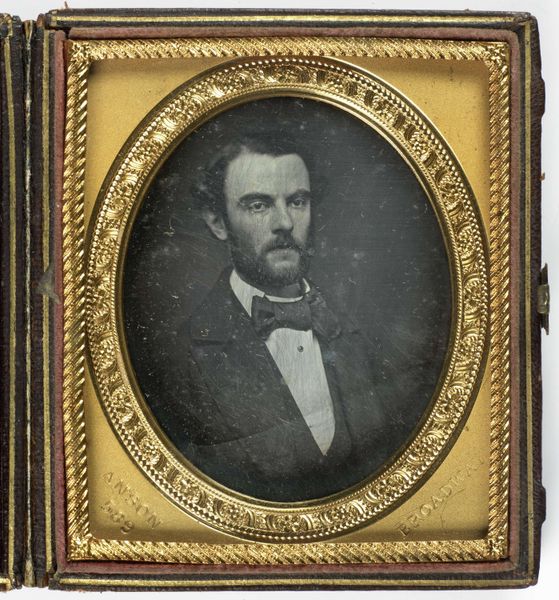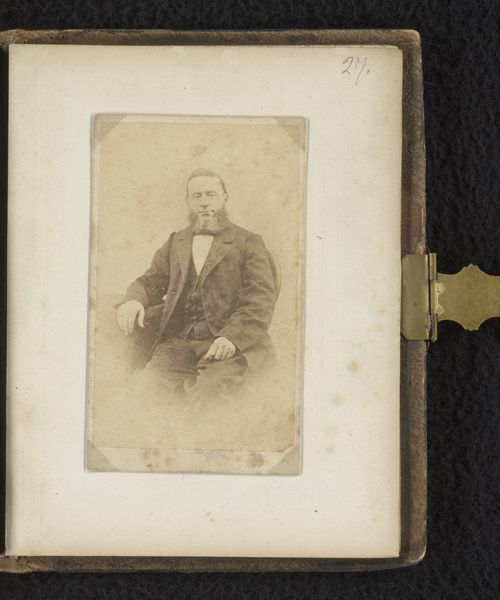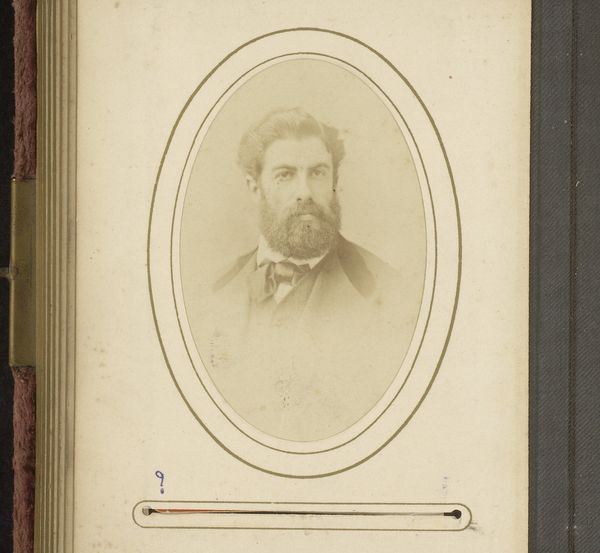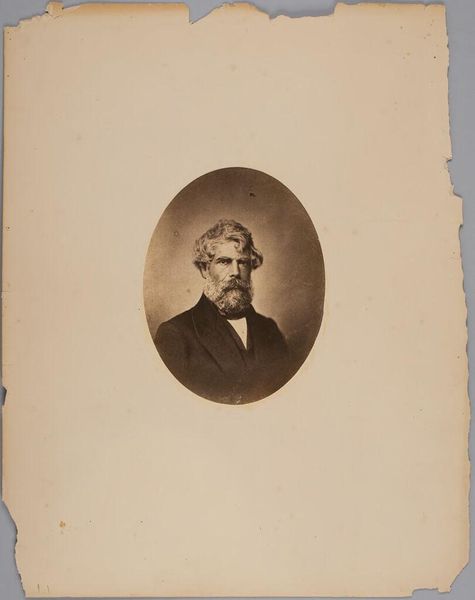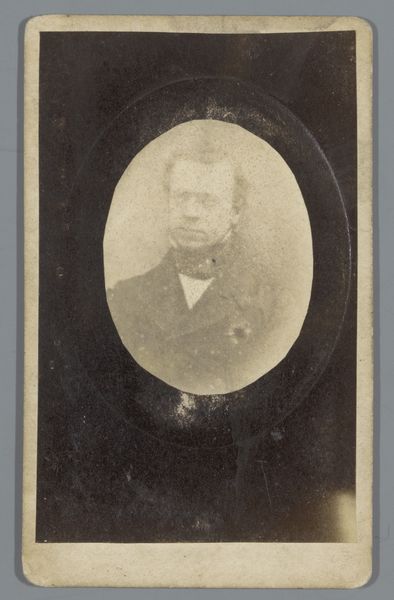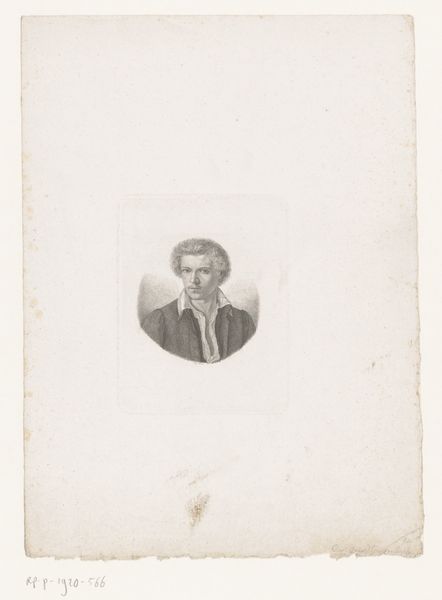
photography
#
portrait
#
16_19th-century
#
egg art
#
stone
#
sculpture
#
strong focal point
#
sculptural image
#
photography
#
unrealistic statue
#
framed image
#
carved
#
watercolor
#
statue
Dimensions: 8.3 × 7 cm (plate); 9.4 × 8 × 1.5 cm (case)
Copyright: Public Domain
Curator: This intriguing portrait, simply titled "Untitled," was created by W. Lucas sometime between 1839 and 1899. It’s held here at the Art Institute of Chicago. Editor: It has a rather somber quality, doesn’t it? The sepia tones, the gentleman's serious expression, and the way it's presented within a framed image contribute to a feeling of introspection. Curator: Absolutely. The formal elements emphasize a bygone era. But also think of photography in that period – this was more than documentation; it was about presenting an aspirational image. How do we think about the idea of memory as material here? Editor: The frame itself adds to the sense of preciousness. You imagine someone carefully crafting and selecting this setting. Gold leaf, perhaps, and some fabric lining… Were they conscious of how the case amplified the perceived worth? Curator: Likely. And think of the oval frame within a square; framing is never neutral. This oval concentrates the eye. And the choice of that ornate detail feels symbolic of aspiration, as though bordering and securing the individual, holding the value and representation intact for posterity. Editor: Right, and it highlights the craftsmanship involved. Consider the production chain for just one of these images; the mining and processing of materials for the photographic plate and its frame, the artisan labor of fabrication. What statements can we glean about the economic landscape by its display? Curator: This portrait could function almost as a cultural relic, a link to an older value system where dignity and societal standing were paramount. I wonder what narrative the portrait reveals when we think about collective identity versus personal history? What stories are embedded, encoded into his presence? Editor: Ultimately, it is an intimate object reflecting the social conditions that enabled its creation, prompting questions of labour, status, and perhaps loss. Food for thought, isn't it? Curator: Definitely. Let’s proceed, shall we? There's much more to uncover here.
Comments
No comments
Be the first to comment and join the conversation on the ultimate creative platform.
